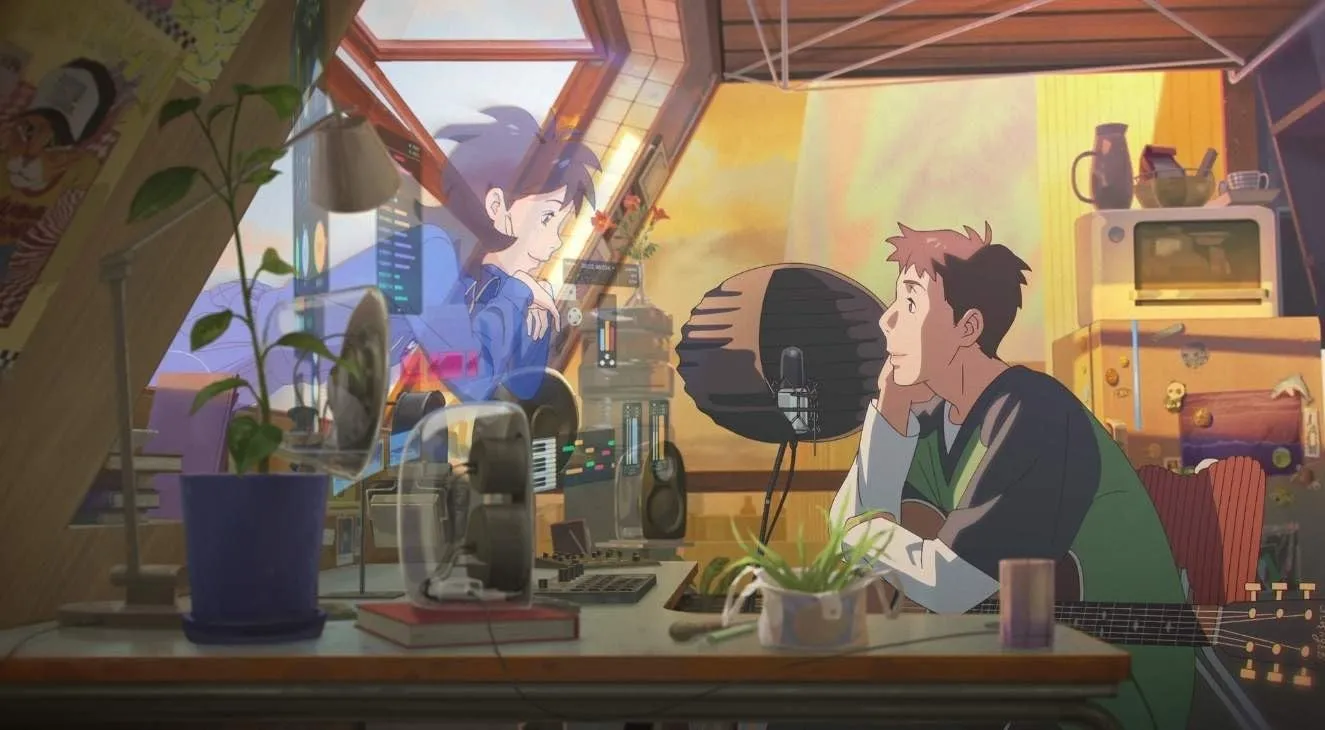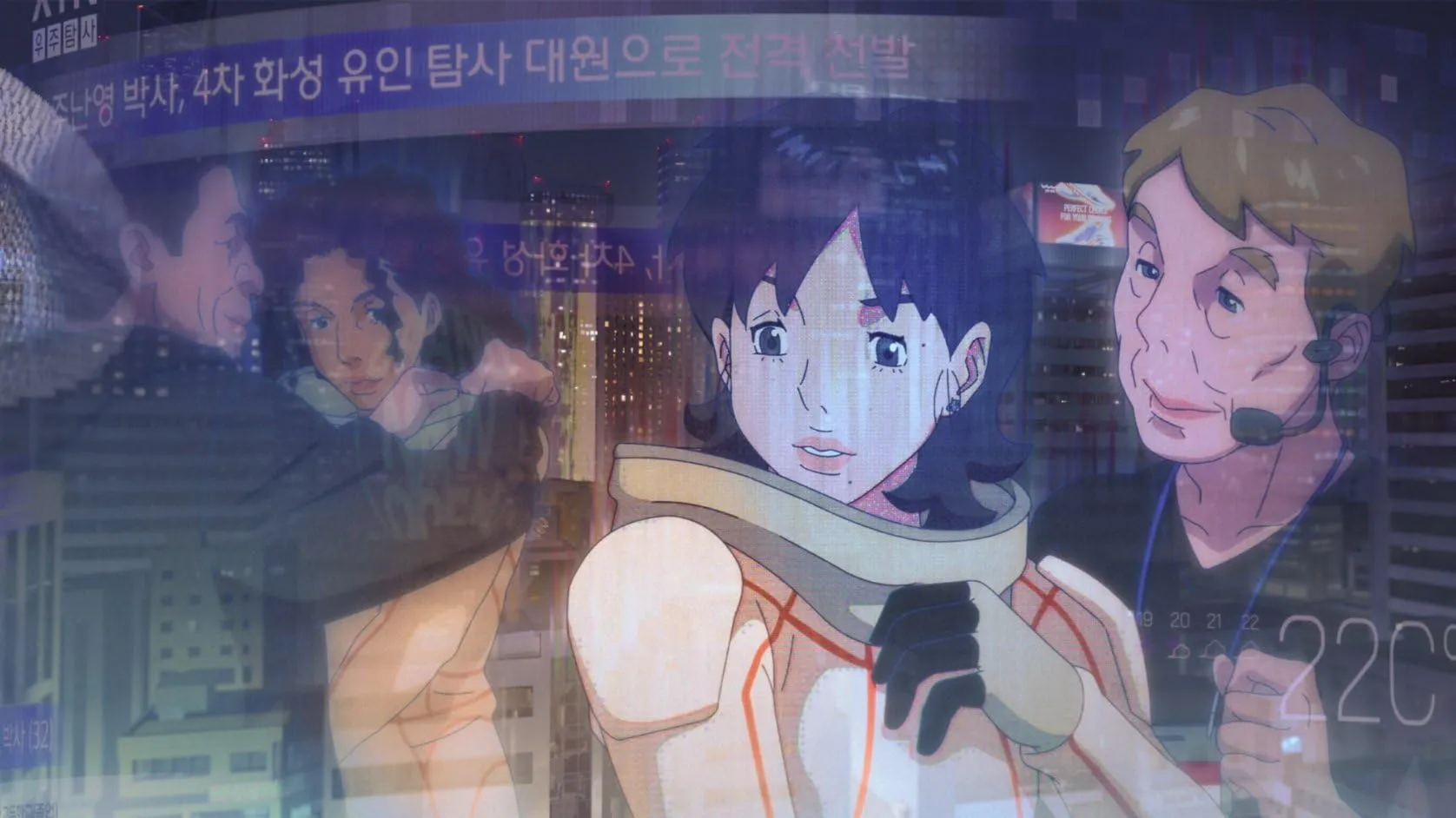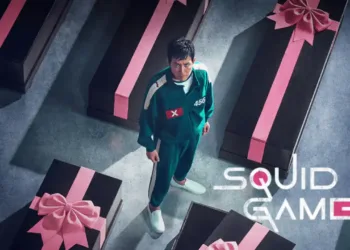It’s not every day an animated film tackles a sincere, adult romance, let alone one set against the backdrop of interplanetary travel. Lost in Starlight, a new Korean animated feature, does just that, weaving a high-concept science fiction world with a deeply personal love story.
The film introduces us to Nan-young, a gifted astronaut candidate whose ambition to reach Mars is deeply personal; her mother was lost on a prior mission to the red planet. Her life, so focused on the stars, is unexpectedly grounded when she meets Jay, a former musician who now repairs old electronics.
Their connection in the vibrant, futuristic city of Seoul is immediate and undeniable. A chance encounter blossoms into a relationship that feels both fated and fragile. The central tension is established right away: can this newfound love survive the ultimate long-distance challenge? It’s a classic story of star-crossed lovers, updated for a generation where the distance between two people can be the literal void of space.
Seoul’s Analog Heartbeat
Whenever a film shows me the future, I almost instinctively brace for the rain-slicked, neon-noir streets of a Blade Runner-esque dystopia. What’s so refreshing about Lost in Starlight is how it sidesteps that expectation completely. Its vision of Seoul in 2051 is a warm, vibrant, and sun-drenched metropolis.
Sure, it’s filled with the expected technological wonders—holographic advertisements flicker everywhere, drones zip through the air, and cars navigate themselves—but the overwhelming feeling is one of hopeful energy, not oppressive gloom. The world feels wonderfully lived-in, with clever design touches that make it all seem plausible.
What really makes this setting sing, though, is its embrace of the past. In a world of seamless digital convenience, the story’s most important object is a vintage record player belonging to Nan-young’s mother. I’m a person who still loves the distinct crackle of a needle hitting vinyl, so I immediately connected with this.
Her new friend Jay, a repairman who prefers pen and paper, becomes the keeper of this analog spirit. This thoughtful contrast is the key to the film’s atmosphere. It suggests a future where technology is a tool, not a replacement for human memory and tangible connection, creating the perfect, hopeful stage for a love story.
Mending the Past, Facing the Future
A story like this lives or dies by its central relationship, and Lost in Starlight wisely puts its focus on Nan-young. She is the film’s anchor, a brilliant scientist whose professional ambition is indistinguishable from her personal need for closure. Haunted by the loss of her mother on a previous Mars mission, her quest for the stars is also a search for a ghost.
This gives her a wonderful depth; she is capable and driven, but also carries an emotional vulnerability, visualized in startling nightmare sequences, that makes her feel completely real. Her counterpart, Jay, functions more as a grounding force.
He’s a former musician who has put his own passions aside, and while his backstory isn’t as fleshed out, his purpose is clear. He represents the pull of an earthly life and inspires Nan-young to find balance, just as her dedication eventually reignites his own artistic spark.
Their romance unfolds through a series of beautifully symbolic moments. Their first meeting isn’t just a chance encounter; it’s centered on him offering to fix her mother’s broken record player, a perfect metaphor for what their relationship will attempt to do.
The film uses familiar romantic shorthand—sharing noodles, huddling under an umbrella—to build their bond quickly, but it’s the quiet moments that stand out. There’s a mature depiction of intimacy here that I find incredibly refreshing in animation.
The focus is on the afterglow, the quiet conversations and shared space, which feels more genuine than what many live-action films offer. Their connection is admittedly an idealized one, forming with a speed and purity that feels almost like a fable. But this isn’t a story about the messy start of a relationship; it’s about whether a perfect, fated love can withstand the ultimate test.
Painting with Light and Memory
Whatever quibbles one might have with the story, there is no debate about the visual artistry of Lost in Starlight. This is, simply put, one of the most beautiful animated films I have seen in years. Director Han Ji-won and her team have created a world that feels both immense and intimate, blending the warmth of hand-drawn character animation with seamless CG effects that allow the camera to sweep through the cluttered, vertical cityscapes with breathtaking fluidity.
The true star of the show, however, is the lighting. The filmmakers demonstrate an obsession with how light behaves, infusing nearly every daytime scene with the soft, warm texture of the “golden hour,” which gives the central romance a palpable sense of nostalgia and tenderness.
This makes the shift to colder, blue-hued palettes during moments of emotional distress all the more effective. The attention to detail is just stunning—from the way light from a passing train momentarily illuminates the characters’ faces to the soft shimmer of neon signs reflecting off their skin.
This mastery of light extends to the film’s more abstract sequences. When the film visualizes Nan-young’s internal trauma, it leaves realism behind for surreal, hallucinatory imagery that is both gorgeous and unsettling. The depictions of space travel are equally grand, calling to mind the psychedelic awe of classics like 2001: A Space Odyssey.
These are the moments where the film becomes pure visual poetry. There is one shot in particular that I know will stay with me: Nan-young in orbit, watching a single tear detach from her eye and float in zero gravity, with the blue marble of Earth perfectly reflected in its tiny surface. It is a perfect, profound image that could only be achieved through the boundless creativity of animation.
Houston, We Have a Plot Problem
For all its visual splendor and heartfelt romance, Lost in Starlight runs into significant turbulence when it comes to its narrative structure. The film makes a bold choice to build its second half around two parallel conflicts. On Mars, Nan-young faces a genuine life-or-death struggle against a hostile environment, a situation with immense physical and psychological stakes.
Back on Earth, Jay’s great challenge is to overcome his stage fright and perform his music live again. The movie presents these two plotlines as emotionally equivalent, cutting between them as if the dramatic tension is the same. And with all respect to the very real fear of public performance, it simply isn’t.
This decision creates a structural imbalance that, unfortunately, destabilizes the entire film. Nan-young’s fight for survival is so immense that Jay’s personal difficulty, however relatable, feels almost trivial by comparison. The choice unintentionally reduces his character, making him feel less like a co-protagonist and more like a footnote in her much grander story. This foundational issue is likely why the film’s final act shifts so jarringly into melodrama.
After establishing a wonderfully natural tone in the first half, the back half begins to feel stagey and sentimental. The writing starts actively pushing for tears, with an ending that feels more contrived than earned. It’s a real shame, as the manufactured emotion of the climax undermines the genuine feelings the film worked so beautifully to create earlier on.
A Beautiful, Broken Telescope
Lost in Starlight is, without question, a staggering artistic achievement. The sheer beauty of its animation, the meticulous world-building, and the masterful use of light combine to create an unforgettable visual experience.
It is a film whose every frame demonstrates immense creativity. That is why its narrative shortcomings feel so pronounced. The wonderfully ambitious sci-fi stage is ultimately home to a simple, conventional romance plot that cannot quite bear its weight. The story’s imbalanced stakes and a finale that leans into melodrama keep the film from achieving true greatness.
What remains is a classic flawed gem. This is a feast for the eyes, a film with a sincere heart that unfortunately beats to a familiar and sometimes sappy rhythm. It is absolutely a memorable experience for its artistry alone. I recommend you see it, but see it for the breathtaking world it creates. Just be prepared that the story itself never fully reaches the stars.
Lost in Starlight premiered on Netflix on May 30, 2025, marking Netflix’s first Korean original animated feature.
Full Credits
Director: Han Ji-won
Writers: Han Ji-won, Kang Hyun-joo
Producers: Raymundo Díaz-González, Rocío Gort, Ignacio Rey
Cast (Voice Actors): Kim Tae-ri, Hong Kyung, Kang Koo-han
Director of Photography (Cinematographer): Park Hong-yeol
Editor: Han Mi-yeon
Composer: Park Sung-jun
The Review
Lost in Starlight
While its breathtaking animation and world-building are a triumph, Lost in Starlight is held back by a story that can't match its visual ambition. The lopsided stakes and melodramatic finale undermine an otherwise heartfelt romance, leaving a film that's gorgeous to behold but narratively frustrating. It's a cinematic experience worth having for the sights, not the story.
PROS
- Stunning, top-tier animation and visual artistry.
- Imaginative and detailed retro-futuristic world-building.
- A mature and sincere depiction of romantic intimacy.
- A hopeful vision of the future that avoids dystopian clichés.
CONS
- A significant narrative imbalance between the protagonists' personal challenges.
- The story devolves into a contrived and melodramatic finale.
- The male lead's character feels underdeveloped in comparison to the protagonist.
- Relies on conventional romance tropes to build its central relationship.




















































